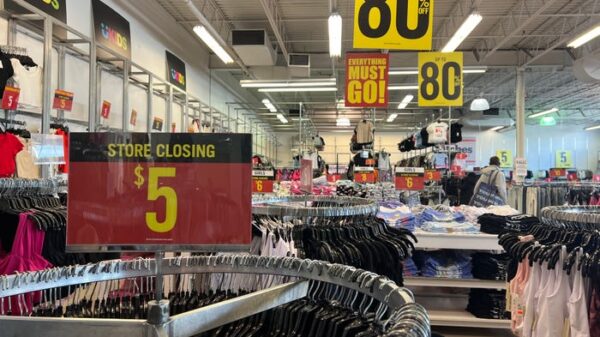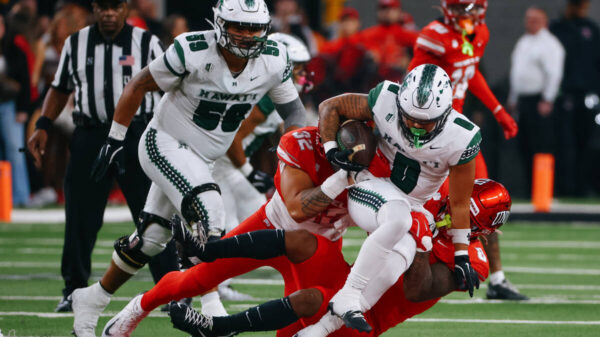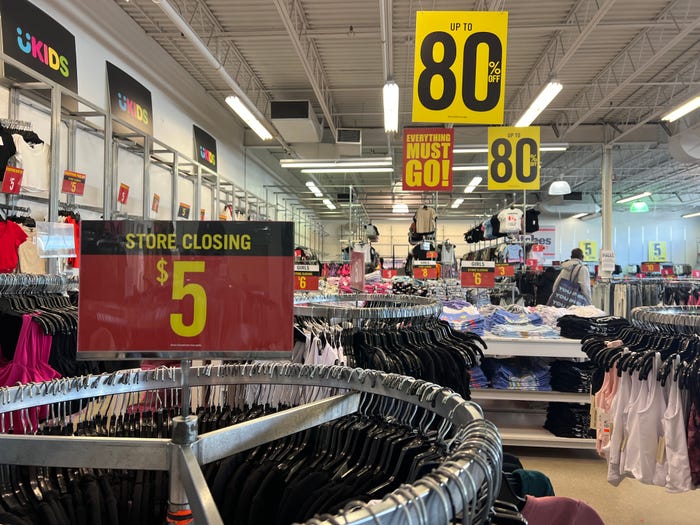URGENT UPDATE: Retail bankruptcies have surged in 2025, with a staggering 14 major brands filing for Chapter 11 protection. As the retail sector grapples with economic challenges, these high-profile cases highlight a troubling trend that impacts consumers and employees alike.
Just this year, several well-known companies have either dissolved or sought new ownership to survive the ongoing upheaval in the retail landscape. The Administrative Office of the US Courts reports a significant increase in business bankruptcies, signaling a crisis for many. This trend is driven by rising inflation, supply chain disruptions, and a slowdown in consumer spending.
Among the notable cases:
Key Bankruptcy Cases of 2025
At Home filed for Chapter 11 protection in June and successfully emerged in October with a new ownership agreement among lenders. This Texas-based housewares chain aims to restructure and stabilize its operations.
JoAnn Fabric, an arts and crafts retailer, filed for bankruptcy in January, closing all its stores by May. This marks its second bankruptcy in under a year, raising concerns about the viability of specialty retailers.
Party City Holdco Inc. faced a similar fate, filing for Chapter 11 in December 2024. After closing numerous corporate-owned stores, the company is trying to recover from a heavy debt load exacerbated by market challenges.
Forever 21 succumbed to competition from fast-fashion e-commerce brands like Shein, filing for bankruptcy in March and closing US locations by May.
Rite Aid, a major pharmacy chain, filed for its second bankruptcy in May, closing most of its locations by October. The company faced significant challenges after a previous bankruptcy less than a year prior.
Bargain Hunt took drastic measures, filing for Chapter 11 and rapidly closing all 92 US locations in February.
Meanwhile, The Container Store filed for bankruptcy in late December 2024 but quickly emerged in January with a lighter debt load.
Other notable cases include:
- Hooters filed in March and emerged in November, aiming to revitalize the brand under its original founders.
- Candy Warehouse filed in October, just before Halloween, with its case still ongoing.
- Del Monte Foods filed in July, securing $912.5 million in financing to remain operational while seeking a buyer.
- Hudson’s Bay Company entered bankruptcy in March, closing its flagship store in June and selling its brand to Canadian Tire.
- Claire’s filed for Chapter 11 in August and was quickly sold to a private equity firm with plans to maintain its retail presence.
- Liberated Brands saw its bankruptcy case dismissed in May after failing to pay secured lenders.
What’s Next?
The retail landscape continues to evolve rapidly, and the fallout from these bankruptcies will likely affect thousands of employees and consumers. Key stakeholders will be watching how these companies implement restructuring plans and whether they can emerge successfully in a challenging marketplace.
As these developments unfold, the urgency for retailers to adapt to changing consumer behaviors has never been more critical. The ripple effects of these bankruptcies could reshape the retail environment for years to come.
Stay tuned for further updates on this developing story, as it impacts not just the companies involved but the entire retail sector and its workforce.







































































